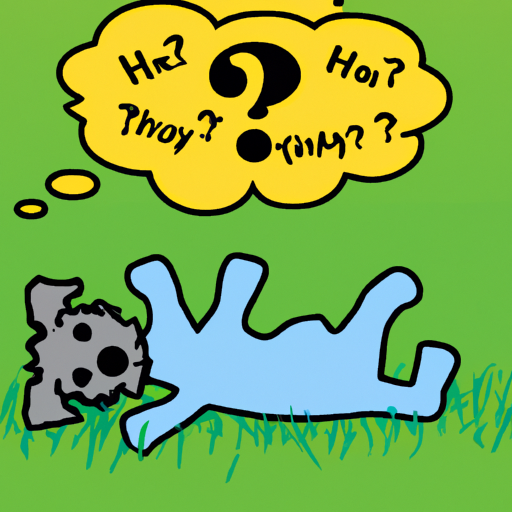Introduction
You’ve seen it countless times. Your four-legged friend suddenly flops down onto the grass, rolls onto their back, and starts wiggling with sheer joy. It’s a sight that never fails to make you smile. But have you ever wondered why dogs behave this way?
The Joy of Scent
First things first, let’s delve into the world of canine olfaction. Your dog’s sense of smell is their primary way of understanding the world. It’s a language all in itself, and sometimes, they want to ‘speak’ it as loudly as possible.
Dogs roll in scents to mask their own, a behavior inherited from their wolf ancestors. Imagine your dog’s roll as a “perfume application” to communicate with other dogs. Here’s how it typically happens:
- Your dog finds an intriguing scent.
- They drop to the ground and start to roll.
- They wiggle and squirm to ensure the scent covers every inch of their body.
Social Interaction
Dogs are inherently social animals. They love to interact, play, and communicate with both humans and other dogs. Sometimes, rolling on their back and wiggling is just their way of inviting play or showing submission to a more dominant dog or human.
The body language usually follows this pattern:
- They expose their belly (a vulnerable part of their body).
- They wiggle to catch attention.
- They maintain eye contact and wag their tail.
A Matter of Comfort
Sometimes, there’s nothing more to the rolling and wiggling than a simple quest for comfort. Just like you might stretch out on your bed after a long day, your dog might roll on their back and wiggle simply because it feels good.
It’s a dog’s version of a back scratch, helping them reach spots they can’t get to with their paws or mouth. It can also be a way of relieving itchiness or discomfort.
Health Considerations
While most of the time rolling and wiggling is nothing to worry about, there are times when it can signal a health issue. Pay attention if your dog’s rolling seems excessive or is accompanied by other signs of discomfort, such as whining or scratching.
| Signs to Watch | Possible Causes |
|---|---|
| Persistent scratching | Parasites, allergies |
| Excessive rolling | Skin infections, ear infections |
| Whining while rolling | Pain, discomfort |
If you notice any of these signs, it’s time to consult your vet.
FAQ
Q: Why does my dog roll on his back in the grass?
A: Dogs often roll in the grass to pick up or distribute scents. It can also be a way of scratching their back or just enjoying the feeling of the grass.
Q: Is rolling over a sign of submission in dogs?
A: Yes, in some cases. If your dog rolls over and exposes their belly, it can be a sign of submission.
Q: Should I be worried if my dog rolls and wiggles a lot?
A: Not necessarily. However, if it’s accompanied by signs of discomfort such as scratching or whining, it’s best to consult a vet.
Q: How can I tell if my dog’s rolling is due to a health issue?
A: Watch for signs like persistent scratching, whining, or changes in behavior. When in doubt, always consult your vet.
Remember, your role as a caregiver is to ensure that your dog’s rolling and wiggling is a sign of joy and not discomfort. Stay observant, stay informed, and continue to enjoy the delightful antics of your furry friend.



